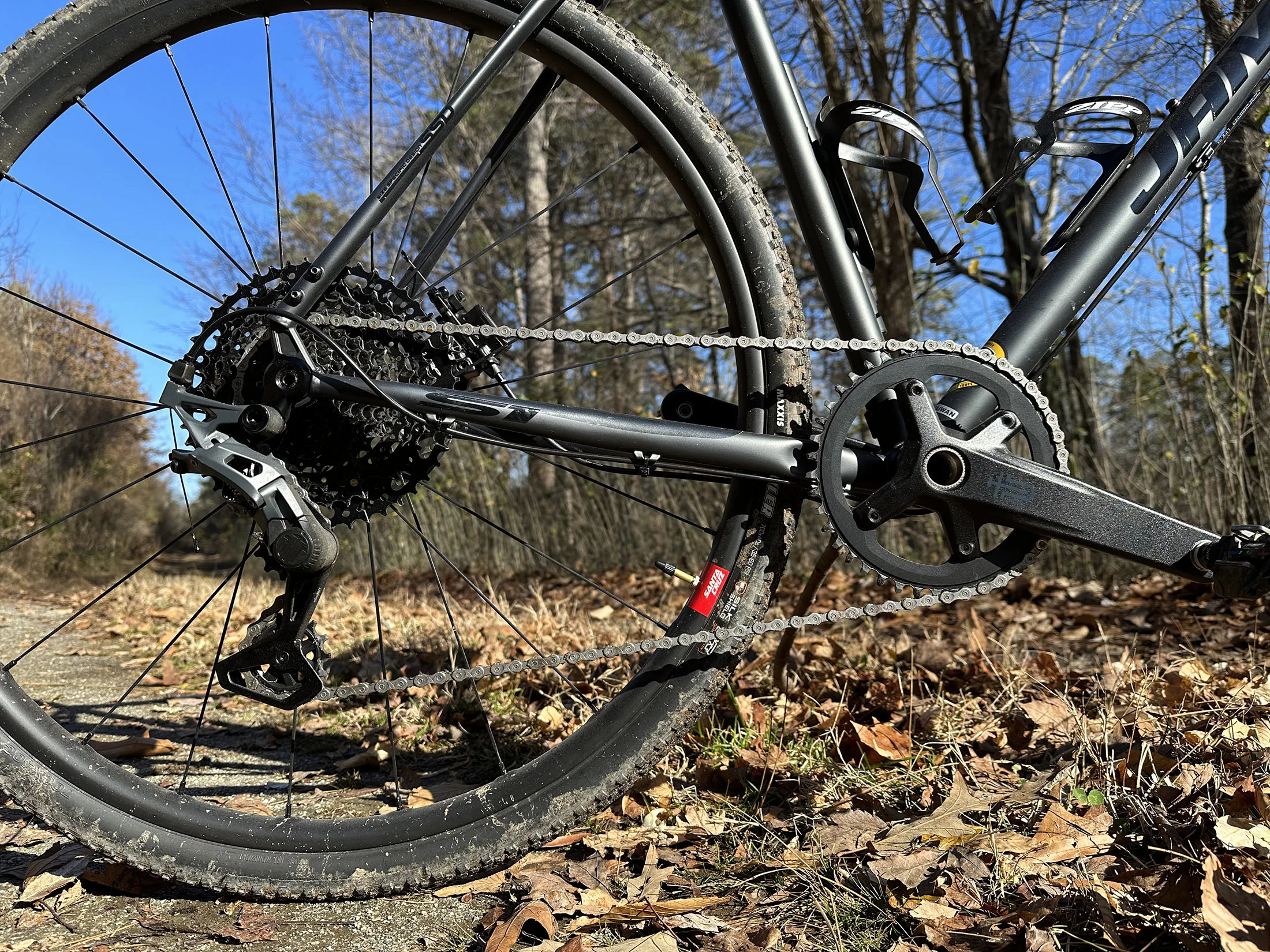This isn’t the first time I’ve reviewed one of MicroSHIFT’s incredibly affordable groups. That would be when I tested the Advent 1×9 mountain bike group, which (spoiler) also impressed me with its performance.
Switching to gravel, MicroSHIFT’s Sword Group cut to the heart of things when it dropped a group starting at just $355. Combine that with options for 1x or 2x, multiple cassette and chainring combos, and you’ve got a compelling story worth a skim. Now, I’ve given it a full read, and the cover doesn’t tell the whole story…
Actual Weights & Component Options

Hit the link above for the launch story to get all of the tech details. In this review, I’ll focus on the 1x group as reviewed, along with the ancillary parts needed to complete the group. But first, the weights:
- Right Shifter/Brake Lever: 277
- Left Brake Lever: 195g
- 1x Rear Derailleur: 305g
- Crankset w/ 42T Chainring: 813g
- 11-48 10sp Cassette: 413g*
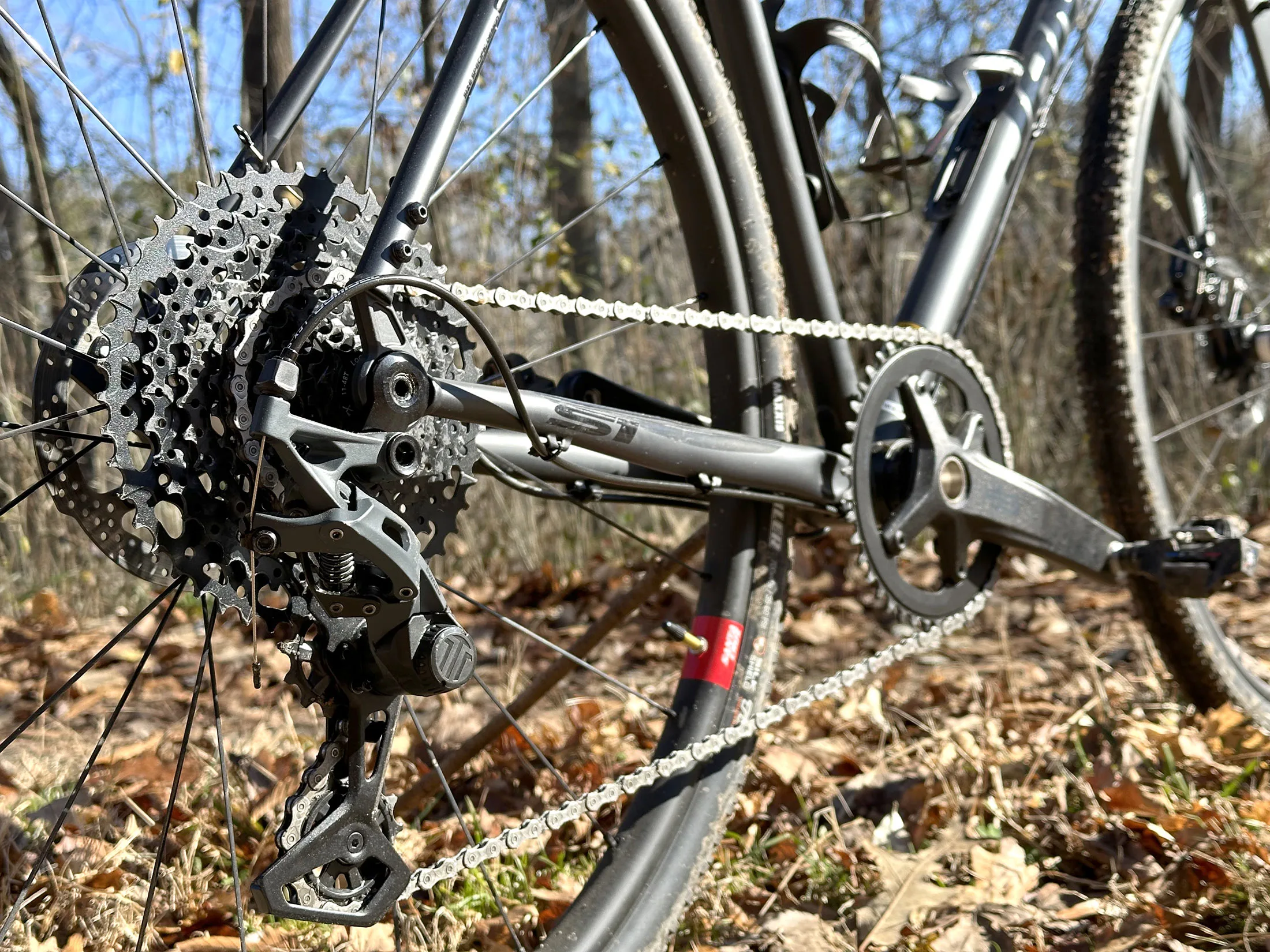
NOTES: There are a few things you should know about these weights and the group:
- 2x groups get a front derailleur, double chainring, left hand shifter/lever, and smaller 11-38 cassette. Otherwise…
- All of the parts weighed are all of the parts offered
- The Sword group does not include a chain, bottom bracket, or brake calipers
- For 1x groups, they use the Advent X 11-48 10-speed cassette, which comes in two versions…
- I chose the lighter steel+alloy cassette over the all-steel option
- They also offer a dropper post compatible left hand lever.
For this build, I mounted the group to a Jamis Renegade Steel gravel bike, used a KMC chain, FSA bottom bracket, and added TRP’s excellent HyRD disc brake calipers.
MicroSHIFT Sword Review
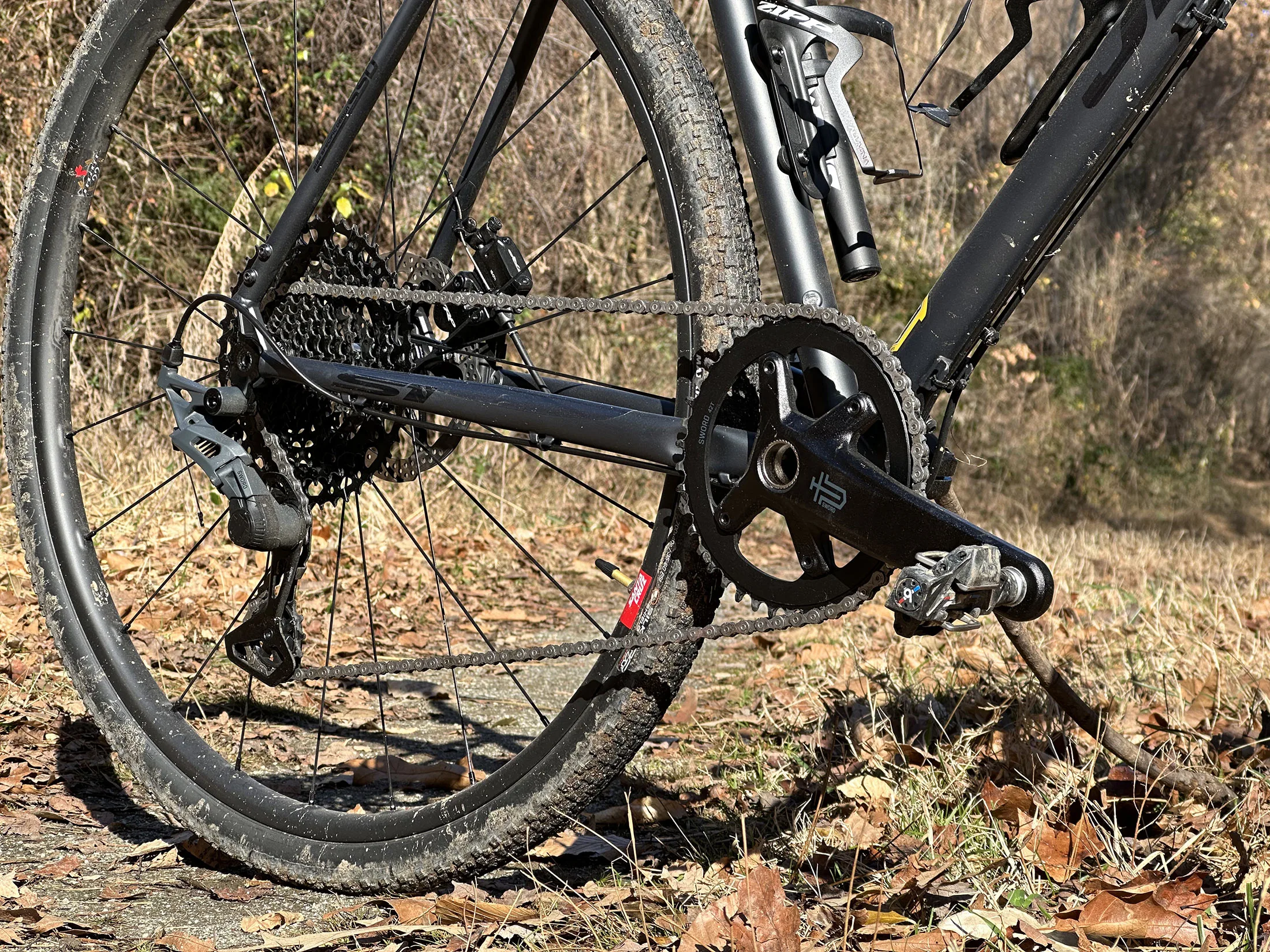
The TL;DR version is this: If you want a budget group that doesn’t skimp on performance, look no further. Not only have I been really impressed with the Sword 1x group, so has everyone (including the local shop folks) that I’ve let ride it. It’s the perfect example of just how good entry level parts have become, and even after you add the necessary components to complete it, it can still be under $600 for a very solid drivetrain.
OK, now for the details…
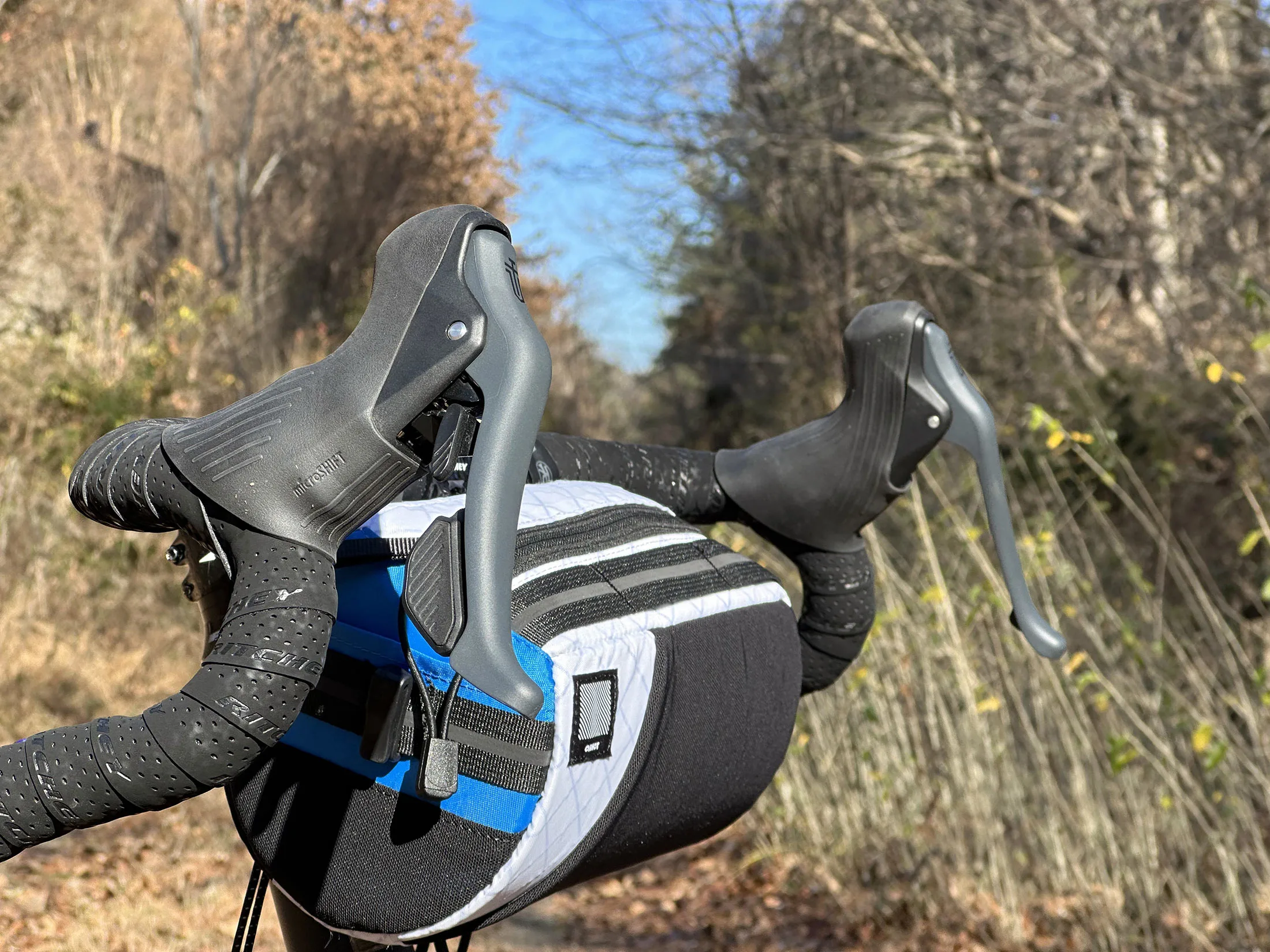
The brake levers have a great shape, making them easy to reach from both tops and drops. They’re lightly textured, like a micro shotpeened finish, adding a bit of grip for secure braking.
The hood shape and size is also good, giving you a firm base for resting your hands. Their circumference is larger than current offerings from Shimano, SRAM, and Campy, so folks with really small hands might find them a bit much to grab on the roughest terrain, but otherwise they have great ergonomics.
The shift paddles use a large lower paddle to pull cable up the cassette to an easier gear, and a tiny release paddle at the top to drop the chain back down to harder gears. It’s different, but not bad. The top trigger is easy to nudge with my pointer finger’s middle knuckle, so even though it looks high up, it doesn’t take an exaggerated movement to actuate it.
The lower paddle has a fair bit of free movement before starting to pull cable, the bottom tip moving almost 2cm inward before doing anything. Compared to premium groups, that may feel like “slop”, but it never bothered me in actual use. Technically, you can get three shifts from a single, extended press, but that’s moving the lever really far inward, making it somewhat impractical.
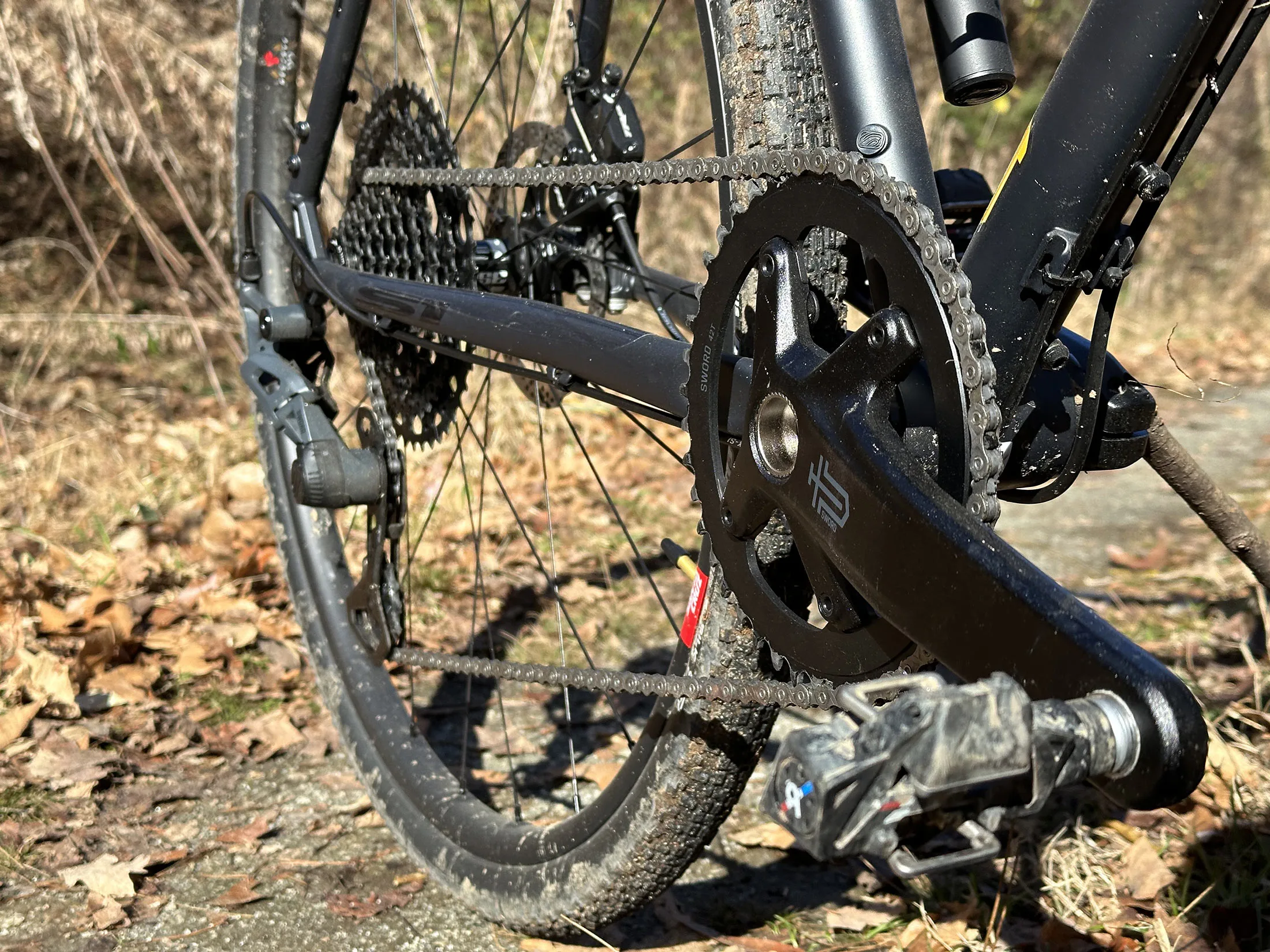
The crankset uses a standard 24mm spindle a la Shimano, so it’s compatible with everything. The alloy arms have a fixed spider, with asymmetric 110/80 BCD chainring mounting bolts that fit both 1x and 2x chainrings.
The chainrings are basic, with narrow-wide teeth that have done a perfectly fine job of chain retention. I’ve dropped zero chains.
The arms are also basic, available in four lengths from 165mm to 175mm. They’re stiff enough that I haven’t noticed any flex, so I have no complaints here, either.
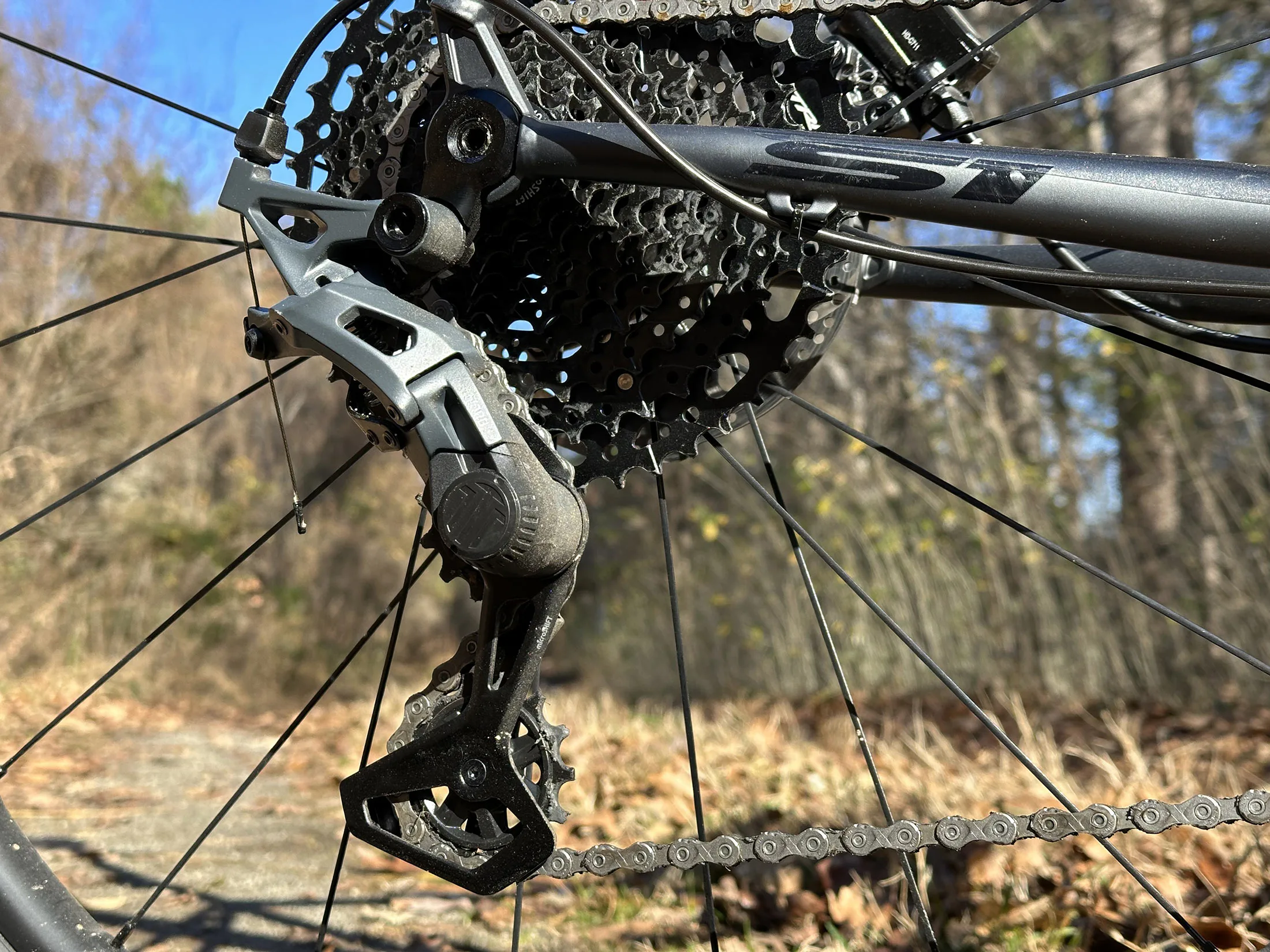
The derailleur has clutch with a stealthy on/off dial…rotate the outer portion of the P-knuckle to turn it on or off. In the pic above, it’s in the “on” position to reduce chain slap, and it works quite well.
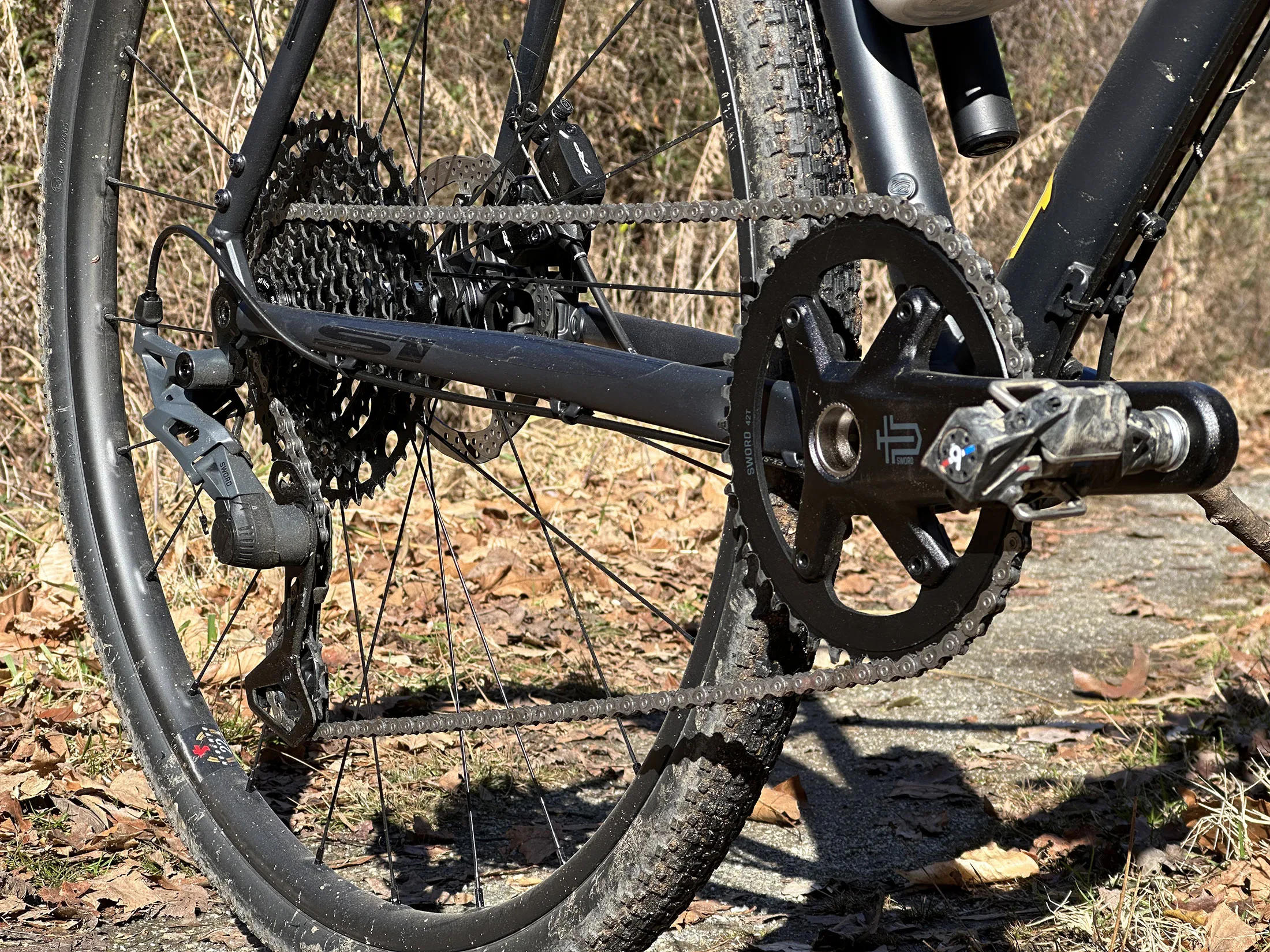
The Sword group also earns bonus points for its black finish with handsome gray graphics, giving it an attractive appearance without attracting attention.
It has that “doesn’t look like it’s worth stealing” vibe, but also doesn’t look cheap or embarrassing if your friends are bike snobs. That’s the perfect combo if you need something that flies under the radar, like in an urban environment where flashy bikes get stolen. Sword lets you still have great performance without making your bike a target.
While I’ve built this bike into a casual gravel cruiser that is mostly ridden around town, I’ve also taken it on a few longer “real” gravel rides, too. And I’d have no qualms about lining up for a 100-miler with it, either. If you’re on a budget or just building up a fun bike, I’ve really enjoyed (and continue to enjoy) the MicroSHIFT Sword group and recommend checking it out.
